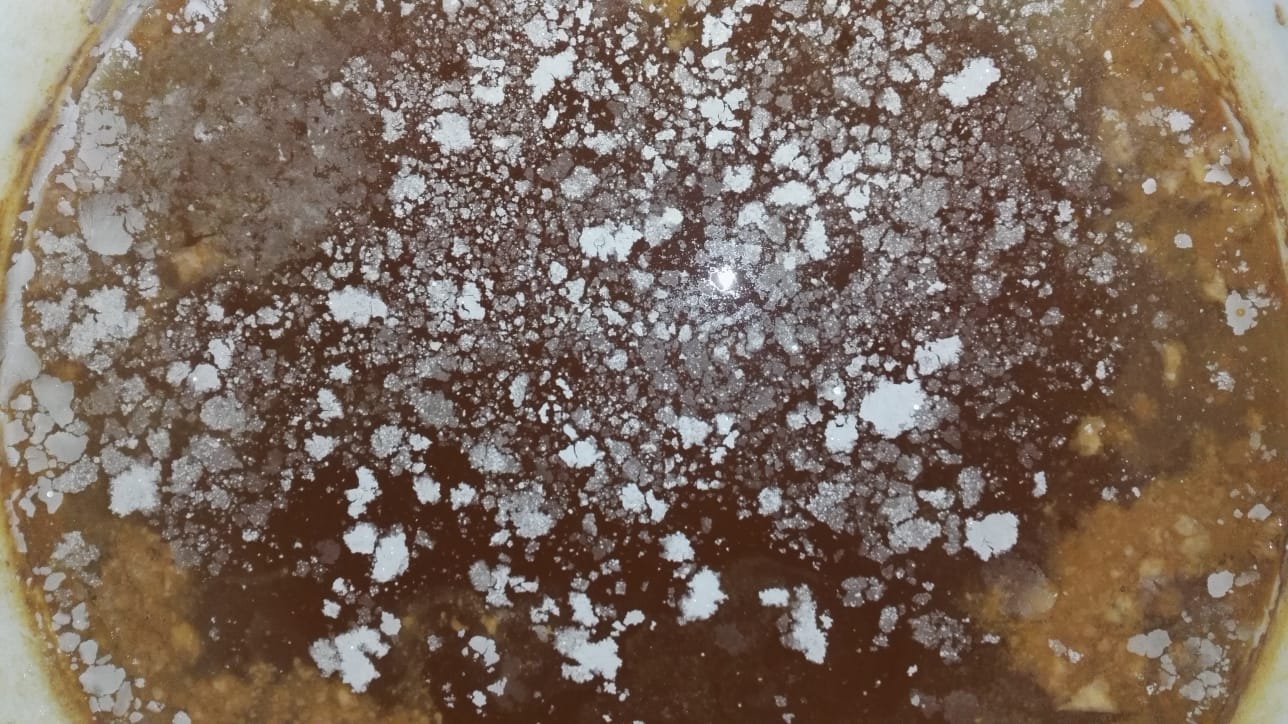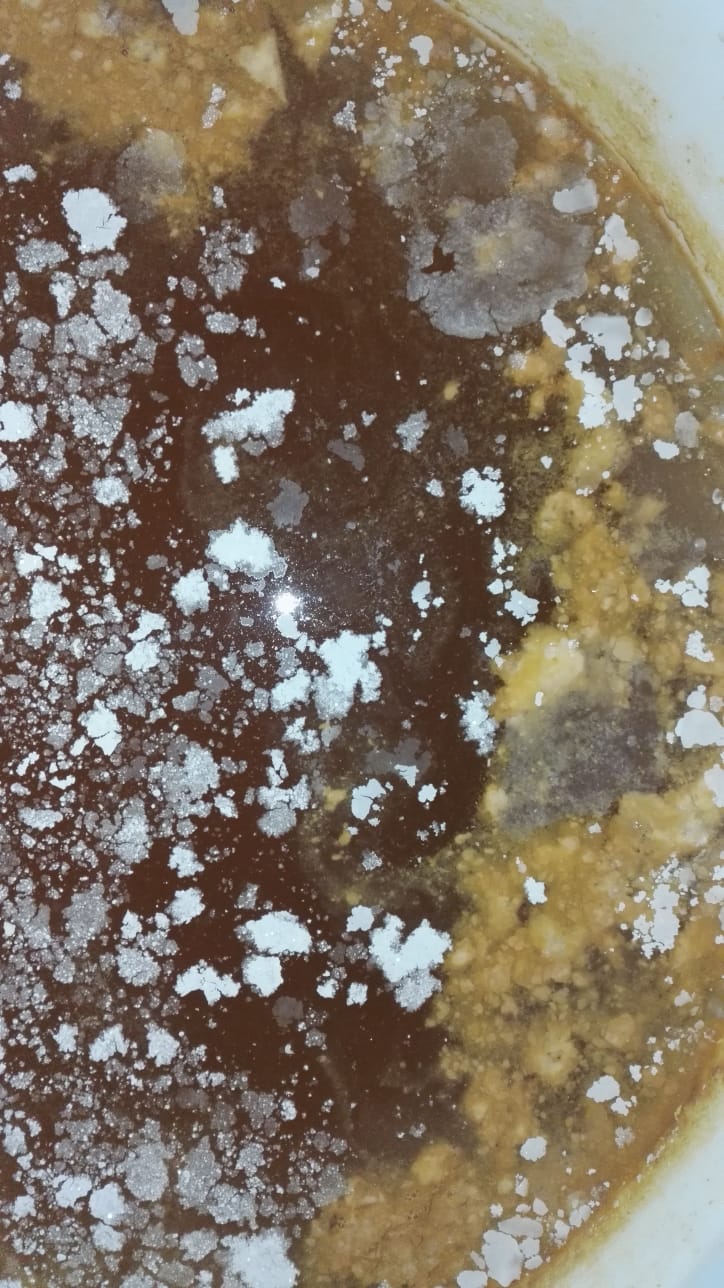PedroAugusto
New Member
- Joined
- Nov 26, 2018
- Messages
- 2
- Reaction score
- 0
Hi,
This year, I have brewed apple cider from fresh apples for the second time. The first time, it went great. This time, I have come across some issues that have been discussed here before, but, just to be certain, I would really appreciate if you could give me an opinion based on the photos.
The fermentation took a while to become audible. The airlock wasn't bubbling. As I was afraid I had underpitched my last year's dry yeast, I bought a fresh one and opened the lid. There were, however, a few white spots on top, but it smelled like the fermentation was slowly going. Within a few hours of pitching this new yeast, it bubbled intensely for a week.
Eventually, the bubbling stopped, I left it to rest for a bit more than a month, and prepared for bottling. When I opened the lid to bottle, those white spots were still there and in greater number. As you can see in the picture, there are two kinds of formations: the white spots, and these cloudy yellow clutters. I have read around here that these might be yeast. Can you confirm that it's not ruined? Why does this happen? I decided to bottle the cider anyway, siphoning the middle clear part as it smelled and seemed to taste normal cider.
Thanks


This year, I have brewed apple cider from fresh apples for the second time. The first time, it went great. This time, I have come across some issues that have been discussed here before, but, just to be certain, I would really appreciate if you could give me an opinion based on the photos.
The fermentation took a while to become audible. The airlock wasn't bubbling. As I was afraid I had underpitched my last year's dry yeast, I bought a fresh one and opened the lid. There were, however, a few white spots on top, but it smelled like the fermentation was slowly going. Within a few hours of pitching this new yeast, it bubbled intensely for a week.
Eventually, the bubbling stopped, I left it to rest for a bit more than a month, and prepared for bottling. When I opened the lid to bottle, those white spots were still there and in greater number. As you can see in the picture, there are two kinds of formations: the white spots, and these cloudy yellow clutters. I have read around here that these might be yeast. Can you confirm that it's not ruined? Why does this happen? I decided to bottle the cider anyway, siphoning the middle clear part as it smelled and seemed to taste normal cider.
Thanks




